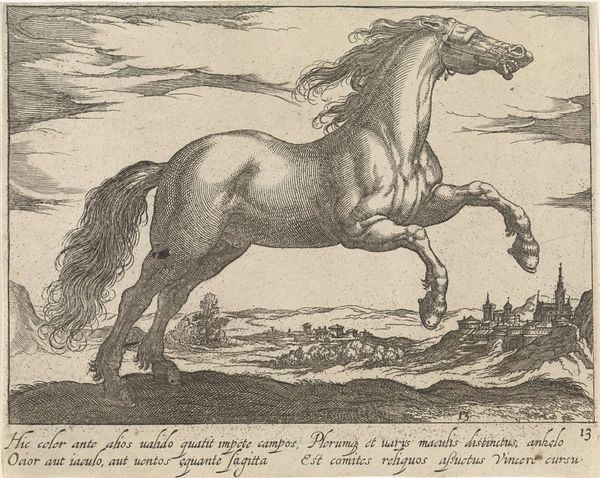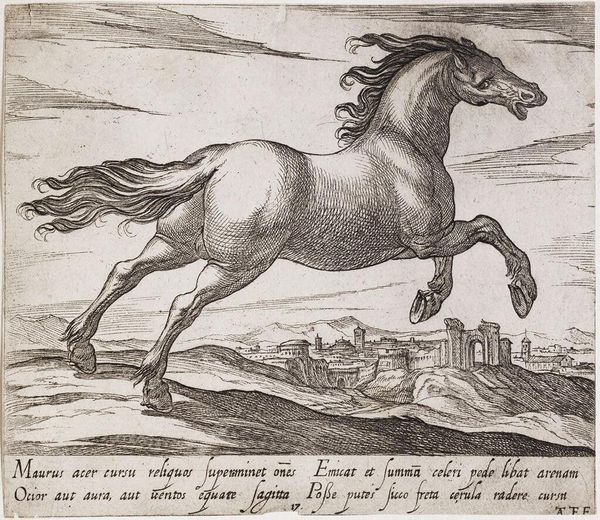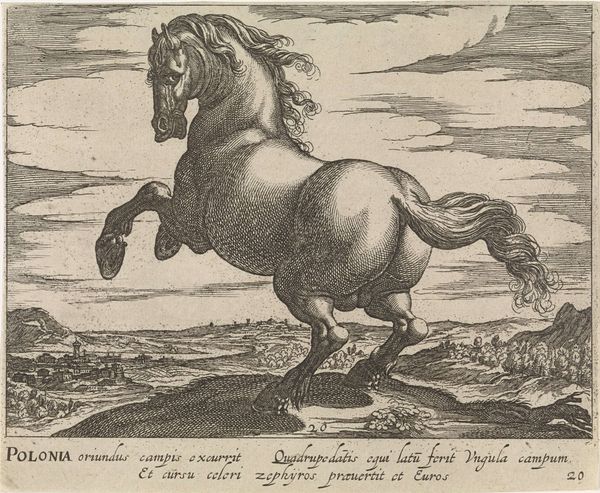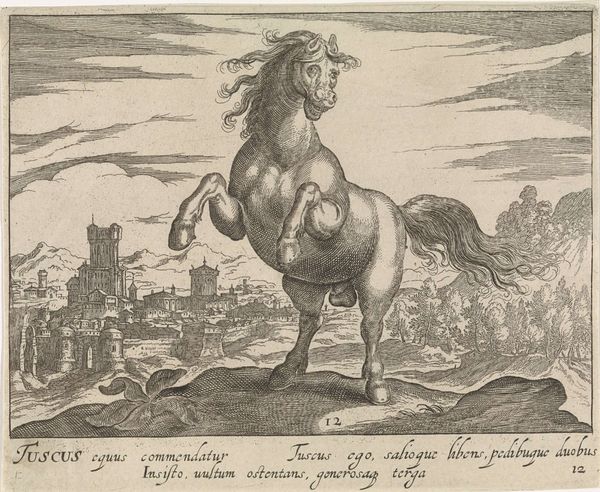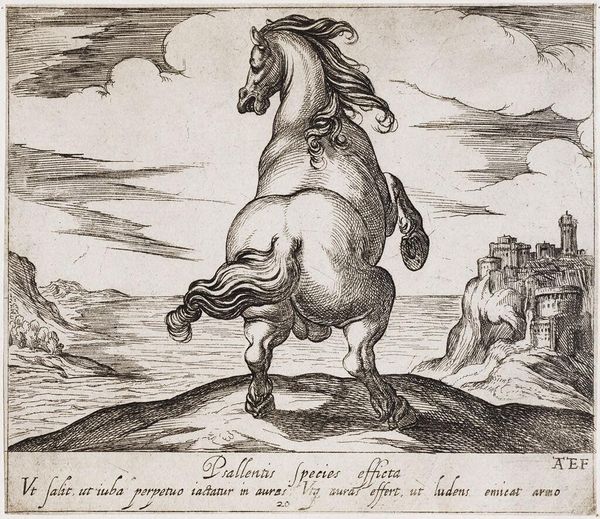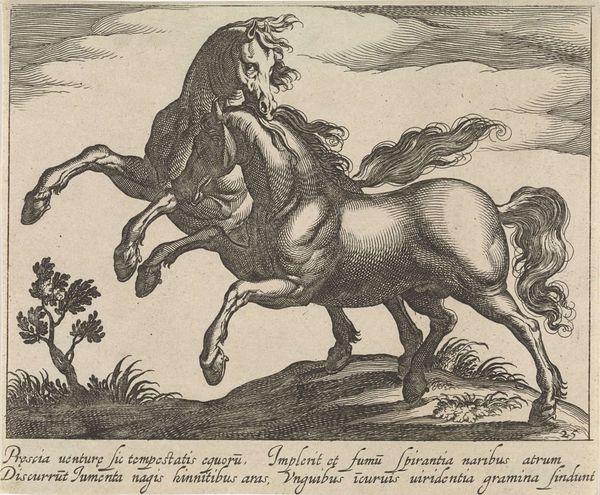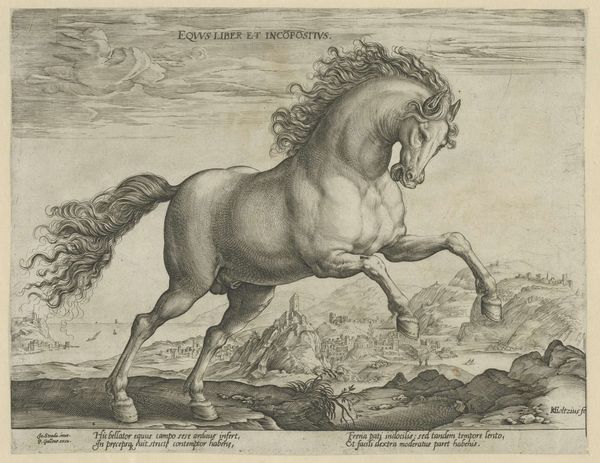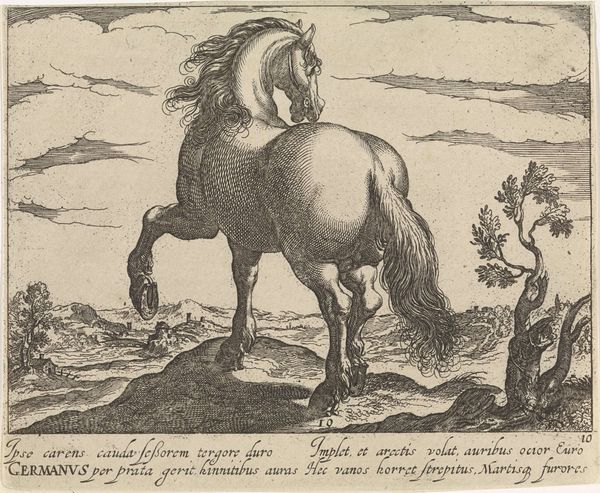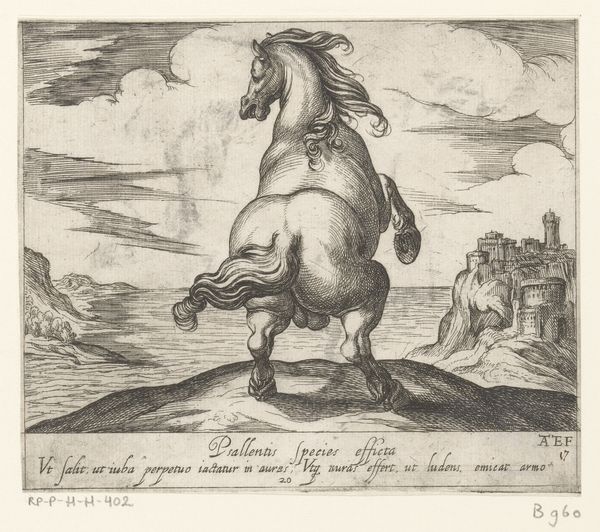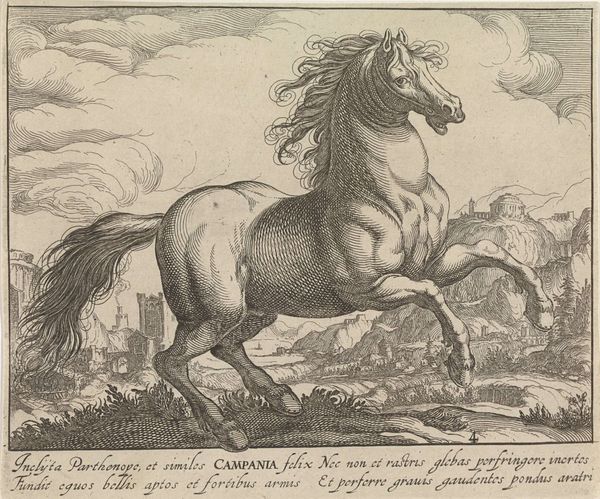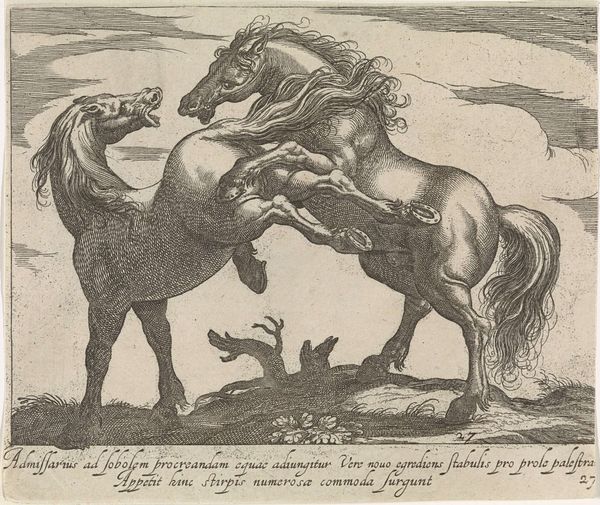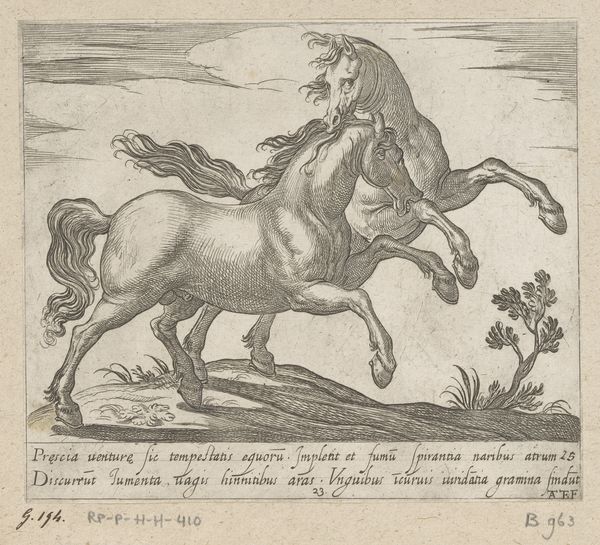
print, metal, engraving
#
portrait
#
baroque
# print
#
metal
#
landscape
#
figuration
#
horse
#
line
#
history-painting
#
engraving
Dimensions: height 137 mm, width 167 mm
Copyright: Rijks Museum: Open Domain
Editor: This is "Landscape with Horse from Mauretania," an engraving, possibly from around the late 16th or early 17th century, attributed to Egbert Van Panderen. There's an incredible energy in the horse’s movement; it seems to leap right off the page! What’s your take on this piece? Curator: I see a carefully constructed image reflecting early modern European attitudes towards the “exotic” and its projection of power through imagery. Editor: Can you elaborate? Curator: Certainly. Think about it: Mauretania, in this context, wasn't just a geographical location; it was a concept, a stand-in for a perceived 'other'. The horse, then, becomes a symbol. A symbol of wildness, power, and perhaps even something to be conquered or tamed. What about the setting – what clues do you see in the landscape about this ‘conquest’ and image management? Editor: I see Roman ruins. Doesn't that connect with the Renaissance interest in ancient culture? It's like they are showcasing both the natural "other" represented by the horse and their civilization overlooking and thus mastering that nature. Curator: Exactly. And consider the engraving medium. Prints allowed for the wide dissemination of images. So, this image isn't just art; it's propaganda, shaping perceptions of Mauretania and Europe’s relation to it. Editor: So it shows how European dominance can be represented, created, and distributed? Fascinating! Curator: Indeed! Understanding art in its socio-political context unveils layers of meaning often missed in formal analysis. I will certainly approach similar works by trying to understand their propaganda messages, hidden in plain sight.
Comments
No comments
Be the first to comment and join the conversation on the ultimate creative platform.
